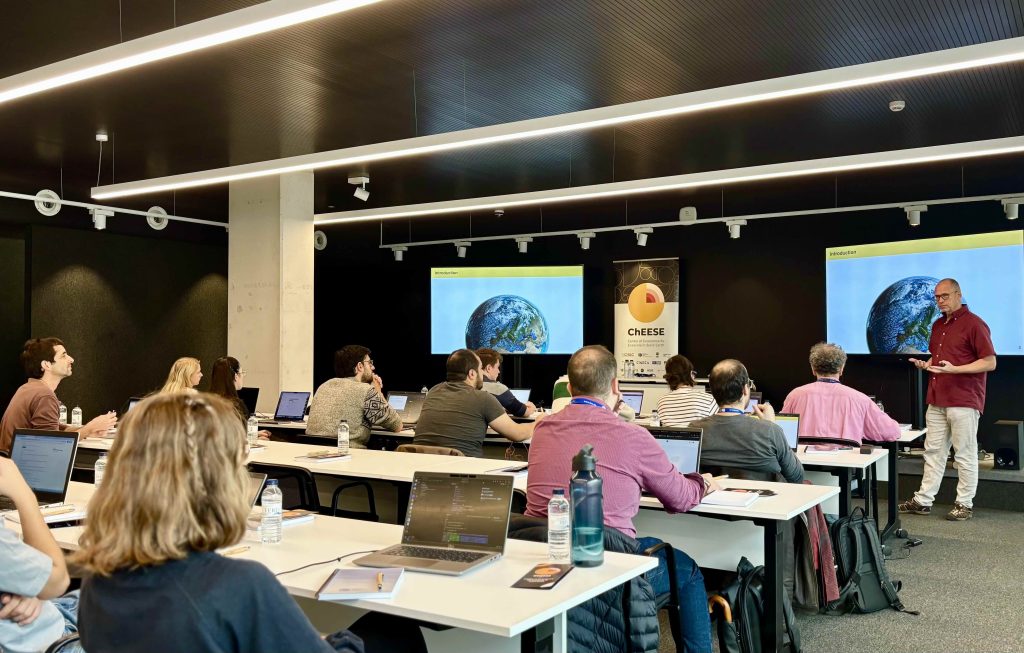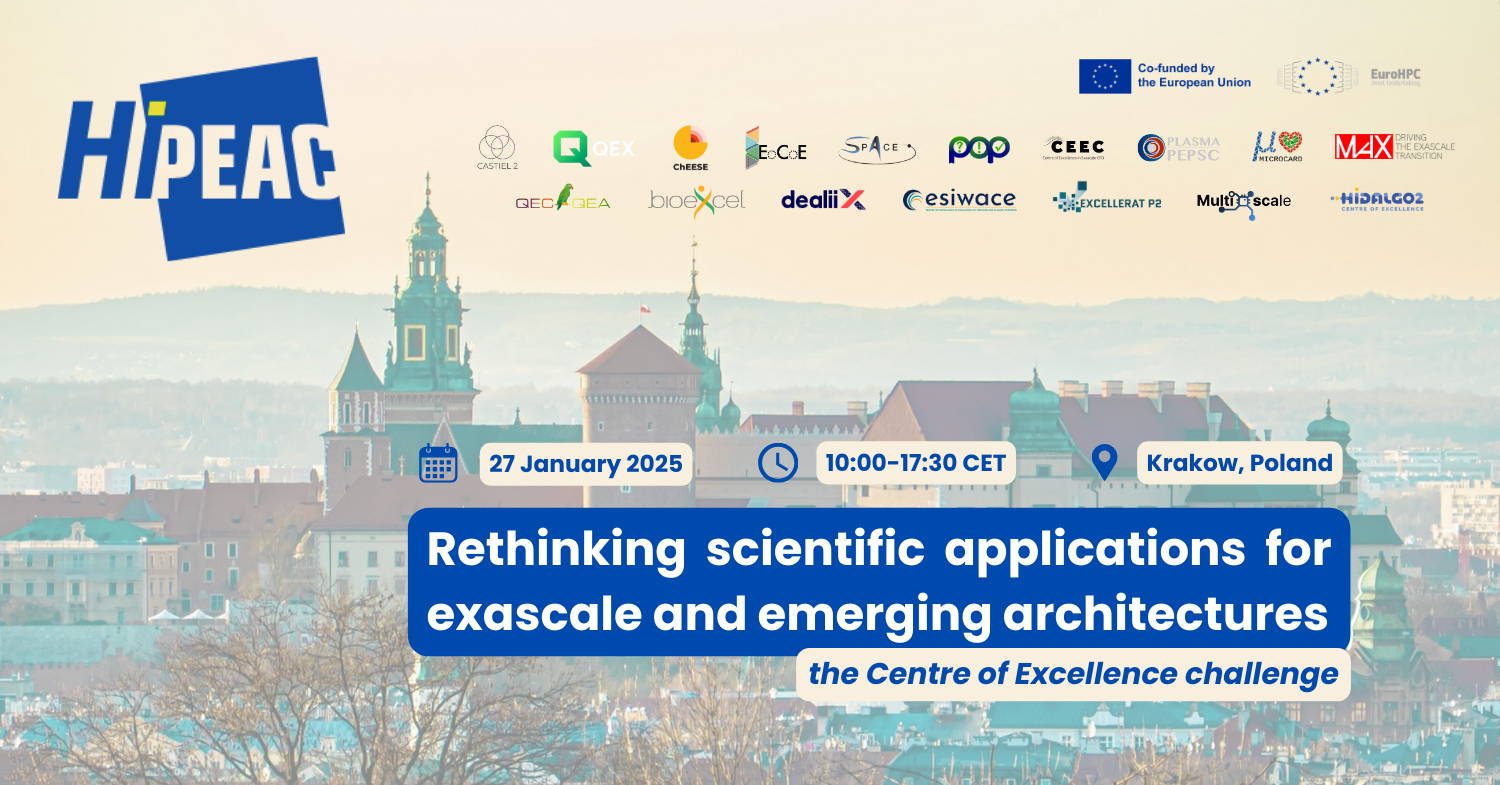On 31 October 2025, around thirty researchers gathered at the Barcelona Supercomputing Center (BSC) for the training Computational Methods in Geophysics, organised by ChEESE CoE. The session was led by Prof. Heiner Igel, a seismologist at Ludwig Maximilian University of Munich (LMU), renowned for his pioneering work in rotational seismology and his innovative approaches to modelling seismic wave propagation. With a career dedicated to understanding how earthquakes generate and transmit waves through complex geological structures, Igel combines deep scientific expertise with an engaging teaching style that makes advanced concepts accessible to all audiences.
Over nine hours of intensive learning, participants from 10 different countries explored the numerical methods that make modern geophysical simulations possible. Using Python and Jupyter notebooks, they translated partial differential equations into algorithms and computer code.
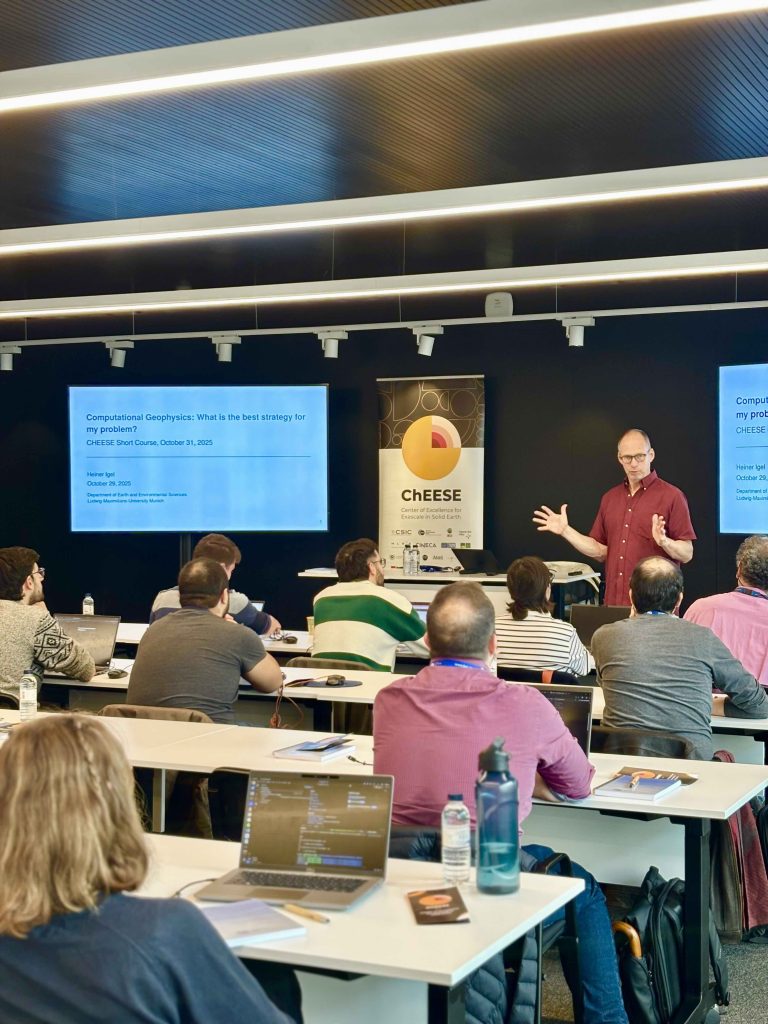
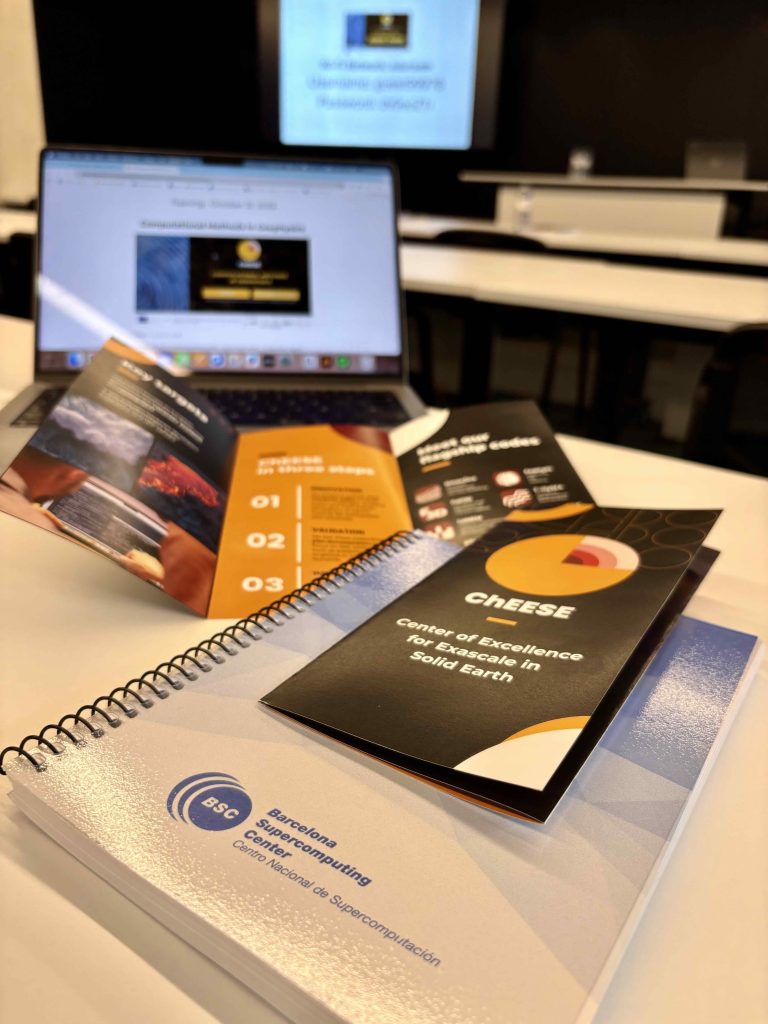
The aim was to uncover the science behind the computational tools that many researchers already use. Today, simulations of wave propagation are routine in the Earth sciences, supported by well-engineered community codes such as SeisSol and SPECFEM, both of which are flagship codes within ChEESE. Understanding the mathematical and computational principles that underpin these codes is essential to use them effectively and interpret their results accurately. Prof. Igel’s clarity and enthusiasm turned a complex subject into an inspiring exploration of how computation is reshaping geophysics.
Participants also had the opportunity to visit BSC’s facilities, including the new supercomputer, MareNostrum 5, guided by ChEESE researcher and leader of the Wave Phenomena Group at BSC, Josep de la Puente. De la Puente’s group recently took part in the Mexican Earthquake Drill, a perfect example of the real-world impact of these numerical approaches.
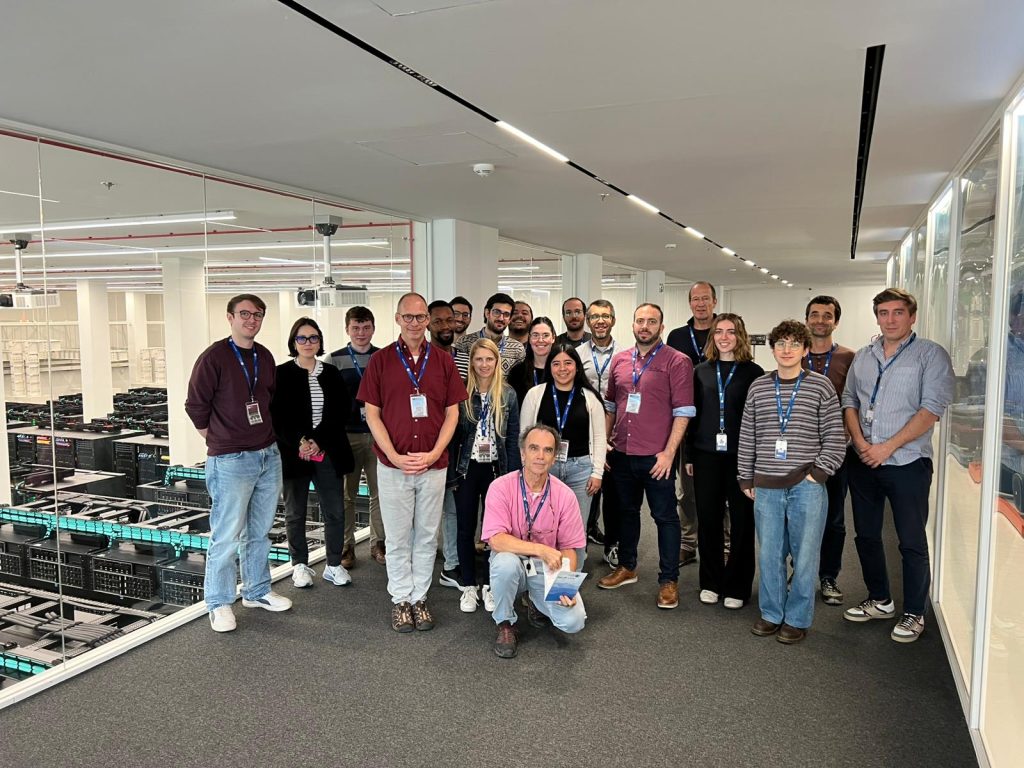
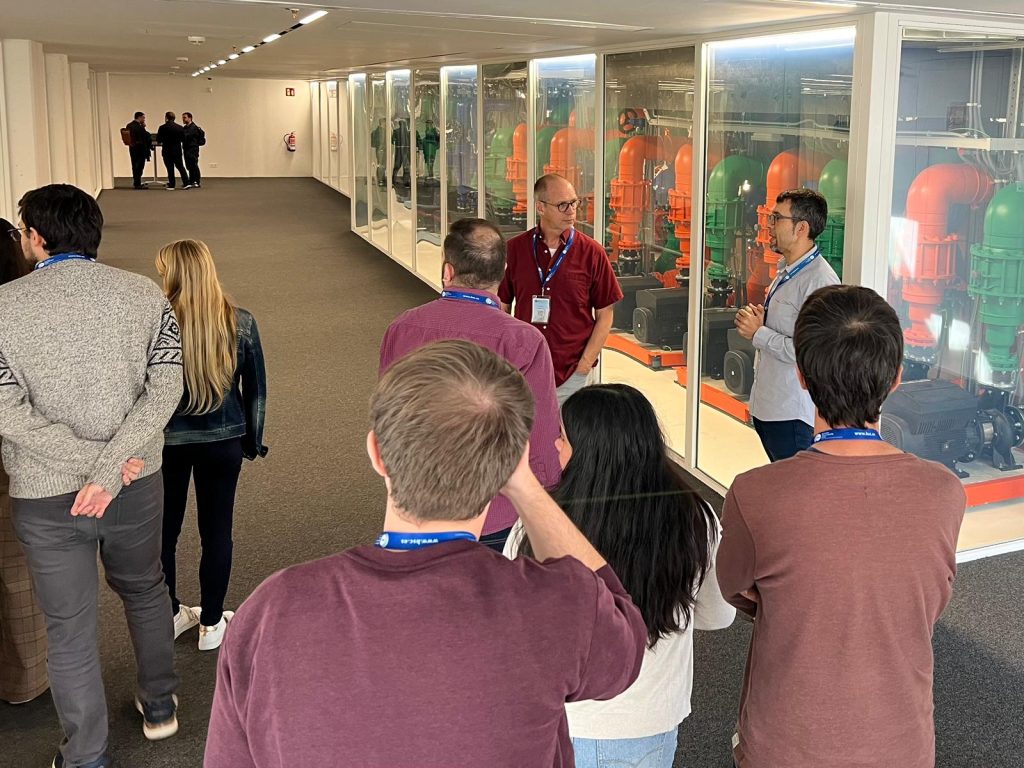
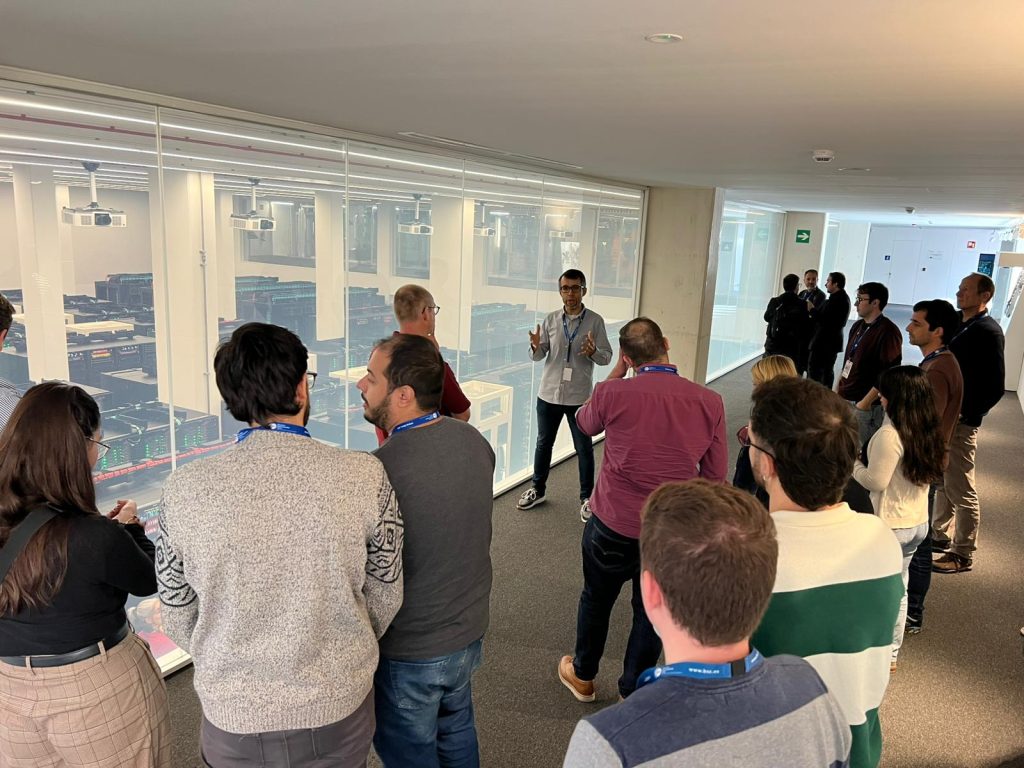
About the ChEESE Trainings
The Computational Methods in Geophysics session is part of the ChEESE Trainings, a series of advanced courses designed to equip researchers and professionals with the computational skills needed to model and forecast geophysical phenomena on next-generation supercomputers. Through expert-led, hands-on sessions, ChEESE Trainings aim to bridge the gap between geoscience and high-performance computing, fostering a new generation of scientists ready for the exascale era.
Over the three years of the project, ChEESE has organised 17 trainings, reaching more than 500 participants across Europe and beyond.
Credits
- Published
- 31 October 2025
- Author
- Varvara Vedia — ChEESE-2P Dissemination Team
- Photos
- Aerton Guimarães & Varvara Vedia — ChEESE-2P Dissemination Team

